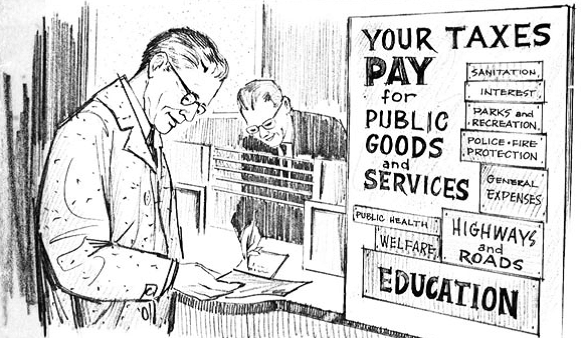Surprise: Property Taxes Going Up Again Despite State Buy Downs

“North Dakota Seems Headed For Worst Of All Possible Outcomes On Property Taxes”
That was the headline to a post I wrote back in August criticizing the state’s approach to property tax relief under Governors John Hoeven and Jack Dalrymple. I pointed out that state buydowns of property taxes don’t reduce tax burdens so much as hide those burdens, temporarily, in the state’s oil-driven revenue surpluses.
An excerpt:
As long as the state budget is overflowing with revenue surpluses it’s easy to “solve” local property tax problems by having the state buy them up. You just hide the spending in the state’s revenue surpluses and call it “tax relief.” And in the short term, property owners will see their taxes go down, because the local spending burden will be disappearing into the surplus of taxes individuals and businesses are paying into state coffers.
But this is poor long-term policy.
The state won’t have soaring revenues forever. Eventually, those revenue gains are going to plateau, and perhaps even decline. What we’ll be left with then are huge new obligations to local governments in the state budget. Lawmakers will either have to keep funding these local “property tax relief” obligations, putting upward pressure on state-level revenue streams like the sales/income taxes, or stop funding them.
Today this is the news in the Minot Daily, my hometown paper. Despite promises of tax relief from statewide leaders, property tax bills in my area are going up:
The owner of a $200,000 house in Minot and Minot Public School District would see a tax increase of about $154. The hike is closer to $200 for the Minot homeowner living in South Prairie School District. But it’s the Minot and Surrey area homeowners in Nedrose School District who will be in for a bit of a jolt. School taxes in the Nedrose district are up markedly. …
Along with the county levy, up from 62.02 mills in 2013 to 70.22 mills in 2014, the levy for Minot School District is up from 81.98 mills to 92.41 mills. The 2014 levy includes a voter-approved bond issue. The school’s sinking interest portion of the levy has increased by 7.3 mills.
The city of Minot’s levy is 77.9 mills, up from 76.05 mills. The park district levy of 27.09 mills is down from 28.11 mills, bringing the consolidated total to 268.62 mills.
For every $100,000 in home value, Minot’s consolidated tax after the 12 percent state discount is $1,064, which is a 7.8 percent increase from 2013.
Part of this increase, to be fair, is a voter-approved bond. There’s little state leaders can do about that. But the rest of increase is just that. An increase. Despite hundreds of millions of dollars per biennium in local school spending shifted to the state budget.
[mks_pullquote align=”right” width=”300″ size=”24″ bg_color=”#000000″ txt_color=”#ffffff”]”This is what I meant by the “worst of all possible outcomes.” A state budget bloated by spending shifts while local property tax bills keep rising.”[/mks_pullquote]
A state budget which is now staring down the barrel of falling revenues thanks to declining oil prices. This is what I meant by the “worst of all possible outcomes.” A state budget bloated by spending shifts while local property tax bills keep rising.
The largest player in North Dakota’s oil patch has started stacking rigs. How good should we feel about shifting an on-going commitment to hundreds of millions of dollars in local spending to a state budget bloated with tax revenues from oil activity?
And Governor Jack Dalrymple wants to keep the shift going. He’s proposed shifting $23 million worth of local social service spending into the state budget in the 2015-2017 biennium, and a study info shifting all of that spending in the 2017-2019 biennium.
But is any of this translating into lower property tax bills?
Perhaps in the short term it has, but long-term it feels more like we’ve just cleared room in local budgets for more taxing and more spending.
Which isn’t to say that all local spending increases are bad. Some of it, maybe even most of it, may be warranted by the facts. But we’ve obscured the decision making process on that spending by shifting local spending burdens to the state budget.
“Just because some think that property tax isn’t fair wouldn’t motivate me to waste billions trying to keep local governments from overtaxing their citizens,” former House Majority Leader John Dorso writes of the situation elsewhere on the blog today. “If the legislature thinks the local officials are soaking the taxpayers they should limit the taxing authority of the political subdivisions.”
I’m not sold on limiting the taxing authority, but I think North Dakota would be a lot better off if the state had focused on reducing state-levied taxes instead of trying to buy down locally-levied taxes.




